Newseum
Decoding an Editorial Cartoon
What advantages do political cartoons have over written editorials? Scholars discuss the topic by exploring editorial cartoons. Working in small groups, pupils analyze an Uncle Sam cartoon and complete a worksheet. As a fun extension,...
Curated OER
Editorial Cartoon: Censorship
Learners explore the concept of juxtaposition. In this editorial cartoon lesson, students analyze an editorial cartoon techniques to develop an understanding of juxtaposition and symbolism used in the cartoons.
Curated OER
Cartoons for the Classroom: Vanishing Newspapers
What is happening to our newspapers? In the context of the current trends of media and the ever-declining print news industry, this handout includes two political cartoons for pupils to analyze, both created by artists working for...
Curated OER
It's a Draw!
Students assess the ways in which editorial cartoons, both current and historic, offer insight into events that shape our world. They create a poster that includes a current editorial cartoon and their explanation of the details of the...
Curated OER
Creating Civic Awareness Through Artistic and Literary Forms
Interpret current events using editorial cartoons and other print media. Middle schoolers explore the meanings of literary and artistic terms such as satire, irony, and caricature. They visit internet sites to develop an understanding of...
Madison Public Schools
Journalism
Whether you are teaching a newspaper unit in language arts, covering the First Amendment and censorship in social studies, or focusing on writing ethics in journalism, a unit based on the foundations of journalism would be an excellent...
University of Pennsylvania
Using Comic Strips to Teach Multiple Perspectives
Scholars view comics from two different perspectives; one paints the Alfred Dreyfus as innocent, while the other portrays the exact opposite. They solve the mystery of what happened by analyzing the source, working in groups, and...
Curated OER
Weighty Matters
High schoolers analyze political cartoons, and write short paragraphs explaining the cartoon's meaning and the cartoonist's point-of-view.
Curated OER
Political Cartoons
Pupils explain that a political cartoon is very much like an editorial--both present personal opinions. Each student writes an editorial that supports the political cartoon. They must analyze the cartoon in order to write about the subject.
Curated OER
Rebels Or Resisters?
Middle schoolers participate in a mock trial on the Whiskey Rebellion that took place in the state of Pennsylvania in 1794. They analyze the perspectives presented by both sides to determine whether the Whiskey "rebels" were guilty of...
Curated OER
Let the Pictures Tell the Story: Presenting a Point of View
Ninth graders examine the process of writing a newspaper article that presents a point of view. They read various newspaper articles, analyze methods of persuasive writing, interpret and create editorial cartoons, and write an editorial.
Curated OER
Through the Eyes of Others
Learners consider perspective as they analyze a political cartoon. In this media awareness lesson, students use the provided discussion questions to explore the meaning of the political cartoon "The Scream," by Edvard Munch.
Curated OER
Do You Agree?
Students recognize bias in a political cartoon, evaluate how the media uses both positive and/or negative political cartoons, and assess the influence a political cartoon can have on a person.
Curated OER
Surviving AIDS
Enhance your middle and high schoolers' research skills with this lesson. After viewing a video clip about HIV and AIDS, high schoolers identify the facts and issues surrounding the disease. They work together to create a newspaper...
Curated OER
Creating a Newspaper
Get the scoop with a fun, engaging newspaper project. After analyzing the parts of a newspaper, including the headline, subtitles, and pictures or images, young journalists get to work by writing their own stories in a newspaper article...
Curated OER
Newspaper Lesson Plan
Students create a newspaper in order to examine the process and impact of political revolutions. In this newspaper lesson, student analyze the impact of selected revolutions while discussing the language style of each newspaper. Students...
Curated OER
Satire in Fiction
Twelfth graders identify satire in various fictional texts. In this language arts lesson, 12th graders will learn to define satire, parody, and caricature. Students will identify different forms of satire in historical and...
Curated OER
The Rise and Fall of the Jim Crow Era
Students explore African American history by researching the Jim Crow laws. In this Civil Rights instructional activity, students define the Jim Crow laws, the reasons they were put into place, and how they were ultimately defeated....
ReadWriteThink
Read Write Think: Analyzing the Stylistic Choices of Political Cartoonists
Contains plans for four to five 50-minute lessons about analyzing political cartoons. In addition to student objectives and standards, these instructional plans contains links to PDF handouts and links to sites used in the lessons as...
Library of Congress
Loc: Oliphant's Anthem
A Library of Congress online exhibition of Pulitzer Prize-winning political cartoonist, Pat Oliphant. View over sixty cartoons and see why he is known as one of the most influential editorial cartoonists in America.
Newspapers in Education
Ni Eonline: Cartoons for the Classroom: Cartoon Analysis Worksheet [Pdf]
Newspapers in Education and the Association of American Editorial Cartoonists developed this learning exercise as a classroom handout to aid lessons in dissecting the visual and verbal messages of political cartoons.
PBS
Pbs Teachers: Analyzing Election Cartoons (Lesson Plan)
A lesson that helps students identify symbols and caricature in political cartoons. Students will analyze how political cartoons portray messages, opinions, and points of view and will then compare them with written editorials.


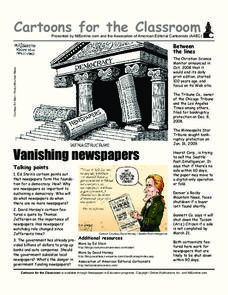




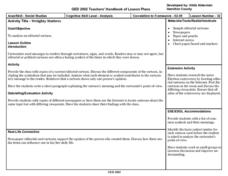




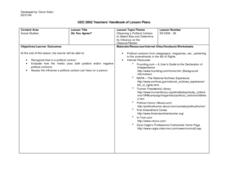
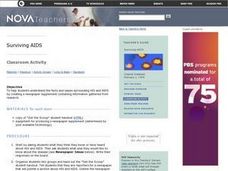



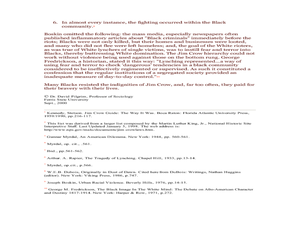
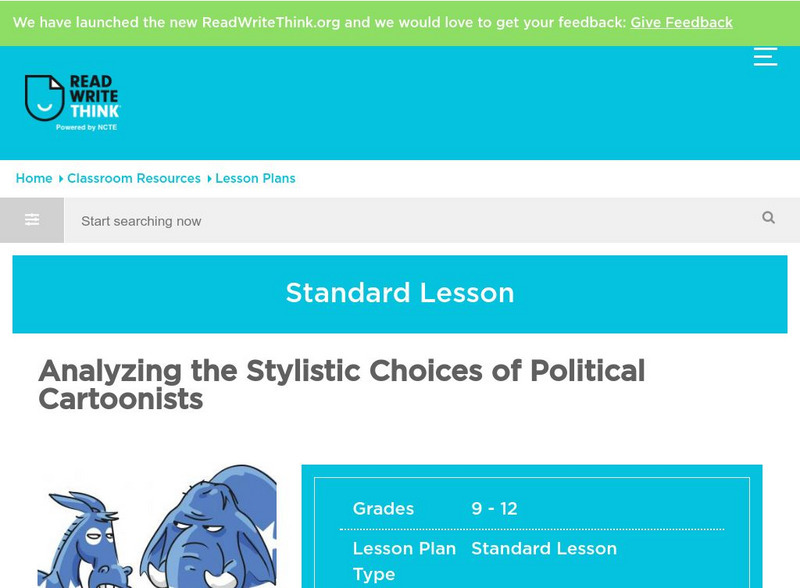

![Ni Eonline: Cartoons for the Classroom: Cartoon Analysis Worksheet [Pdf] Unknown Type Ni Eonline: Cartoons for the Classroom: Cartoon Analysis Worksheet [Pdf] Unknown Type](https://d15y2dacu3jp90.cloudfront.net/images/attachment_defaults/resource/large/FPO-knovation.png)